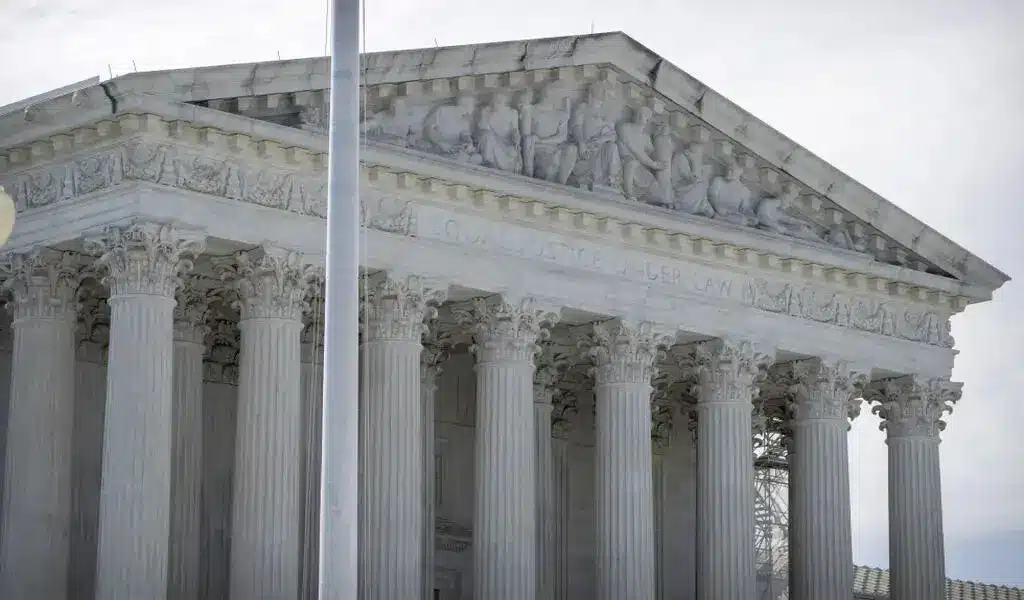News
Sex Trafficking Victims Go Unnoticed in Laos

Vahn is one of many Lao girls to get cycled back into the sex trade after being deceived twice by relatives.
VIENTIANE – Like many girls in Laos, where almost one-third of the population lives below the poverty line, Vahn* was desperate to earn money for her family. This made her a prime target for sex traffickers.
As an uneducated 15-year old, Vahn said she was convinced by her stepsister to work at a farm in central Thailand. But she ended up at a Thai brothel, where she was forced to have sex with a client who paid to take her virginity.
Vahn’s story is not unique. Laos, a landlocked, communist state with one of the worst poverty rates in Southeast Asia, is a prime source for Thailand’s flourishing sex trafficking rings. Around 90 percent of Lao trafficking victims are transported to Thailand, the majority of them 12- to 18-year-old girls who are coerced into the sex trade.
“Whenever I sleep I can’t stop thinking about it,” Vahn told The Diplomat. “and I have nightmares.”
Over the next year, Vahn became an enslaved prostitute. She tried to escape twice before being locked up in a room alone when she was not selling her body. The cash she made from sex work went to pay off her so-called travel expenses, a tactic used by traffickers known as debt bondage.
When a set of new girls were ushered into the brothel, Vahn’s stepsister returned the Lao teen to her village near Vientiane. Back home but still in need of money, Vahn was betrayed by her cousin who asked her to be a dishwasher at a Thai restaurant. Instead, she had to perform sex acts for three months at a karaoke bar until Thai police raided it and sent her to a government-run shelter, she said.
Unknown and Unassisted
Toothless counter-trafficking measures in Laos often fail to keep girls like Vahn from being cycled back into the sex trade, experts say.
Not enough is being done to identify and reintegrate victims in the Greater Mekong Sub-region that includes Laos and Thailand, according to a study released late last year by the Coordinated Mekong Ministerial Initiative Against Trafficking (COMMIT), a multinational project to combat trafficking.
“Having to cope on one’s own was challenging and stressful, and it sometimes left trafficked persons in very fragile positions – both socially and emotionally,” the study says.
There are roughly 470,000 trafficking victims in Thailand, which is ranked 24 out of 162 countries in modern slavery prevalence. Laos is ranked 30, with an estimated 50,000 victims, the 2013 Global Slavery Index reported.
But Thai government shelters assisted 271 victims in 2012, just 0.06 percent of the estimated number of victims in the country.
Only 2,100 rescued Lao victims have been officially repatriated from Thailand since 2001. Most of the victims originated from trafficking hotspots in the southern provinces and Vientiane, all of which sit along the Thai border, UN Inter-Agency Project on Human Trafficking (UNIAP) officials say.
Thai authorities also “push back“ large numbers of undocumented Lao migrants into parts of the country where inexperienced Lao border guards are not trained to help trafficked victims.
Xoukiet Panyanouvong, the Laos coordinator for UNIAP, told The Diplomat that the Lao government must take ownership in counter-trafficking, a practice that remains heavily reliant on foreign donors.
“It is understood that the government has a lack of human resources, funding support and technical skill,” Panyanouvong, one of the contributors to the COMMIT study, said. “It should put more effort in counter-trafficking and take the initiative on implementing it.”
In Laos, a transit center for trafficked victims is partially funded by the government, but victim services are almost entirely financed by NGOs and international organizations whose projects can be delayed by the government’s “internal inefficiencies” to grant approval on them, according to the US State Department’s 2013 Trafficking in Persons (TIP) report on Laos.
Corrupt law enforcement and village leaders have been known to facilitate the transport of girls as well, says the report.
Besides not being identified, victims can go unassisted due to inadequate services, limited information on services, weak referral systems or victims accepting their exploitation as normal, according to the COMMIT study.
This lack of assistance to help victims escape a trafficked life sometimes leads to them being re-trafficked, the study added.
“It’s the biggest concern for us,” Virith Khattignavong, country director for Acting for Women in Distressing Situations (AFESIP), a French NGO that runs a reintegration program in Vientiane, told The Diplomat. “Many Lao girls cross the border and don’t receive the help they need.”
Detained Again
For victims who are rescued from sex venues, Thai authorities typically hold them for up to two years in a shelter where they cannot work or contact family members, advocates say.
Thailand’s Anti-Trafficking in Persons Act (2008) affirms that victims be repatriated to their home country “without delay.” It also calls for a “prompt testimony,” where a victim’s account can be used in court without the victim having to physically take the stand.
A victim can also ask for permission to reside temporarily at the shelter and work while they wait for the criminal case against an alleged trafficker to go forward, according to the law.
“Victims have many rights under the law but not always in practice,” Malayvanh Khamhoung, cross-border case coordinator for Anti-Slavery International in Asia, told The Diplomat. “Some victims have said that it’s like being in detention one more time. They have no idea why they have to stay in a shelter so long or when they can return home.”
As a result, victims may decline assistance so they can continue to work and support their families. Some even avoid reporting crimes to Thai police for fear that they are on the traffickers’ payroll, advocates say.
“They don’t want to go back home with empty pockets,” said Khamhoung, who frequently handles Lao trafficking cases in Thailand.
Reintegration Gaps
Vahn, now 17, is one of the few to have been repatriated after nearly one year in the custody of Thai officials, who used her as a witness to convict the karaoke bar’s owner. Lao police also arrested her cousin for trafficking her but that trial has yet to begin, she said.
“I’m still afraid to go home out of fear of being lied to and trafficked again,” she said.
Along with a handful of other victims, Vahn is learning to be a beautician and would like to open her own beauty salon with a micro-grant from AFESIP as part of the group’s vocational training projects to empower victims.
“We hope the girls will be stronger to protect themselves,” AFESIP’s Khattignavong said. “They can look forward to a new life and not worry about the past.”
Countless other victims are not so lucky. Vocational training is not always tailored to realistic job opportunities once they return home, say authorities.
There has been “a lack of adequate long-term support” for victims that make them “vulnerable to re-trafficking,” the TIP report noted.
The report added that Laos passed a long-awaited plan of action to fight human trafficking in 2012 but it still has not been implemented. The plan aims to improve victim identification and systematic monitoring efforts. It also looks to increase resources such as vocational training for victims.
In addition, Laos has no anti-trafficking law that covers all trafficking victims. The Law on Development and Protection of Women (2004) supports trafficked women and children, but advocates say enforcement is ineffective.
“It would be good to have a comprehensive anti-trafficking law with victim service provisions, but even without this, there are still tools to provide assistance to victims,” Khamhoung said. “Not having this comprehensive law doesn’t mean that victims cannot be assisted.”
*Not her real name
Sean Kimmons is a freelance reporter/photographer based in Thailand who has reported on political instability and violence in the Iraq War, the Golden Triangle illicit drug trade and the HIV/AIDS epidemic in Southeast Asia, among many other topics

News
Google’s Search Dominance Is Unwinding, But Still Accounting 48% Search Revenue

Google is so closely associated with its key product that its name is a verb that signifies “search.” However, Google’s dominance in that sector is dwindling.
According to eMarketer, Google will lose control of the US search industry for the first time in decades next year.
Google will remain the dominant search player, accounting for 48% of American search advertising revenue. And, remarkably, Google is still increasing its sales in the field, despite being the dominating player in search since the early days of the George W. Bush administration. However, Amazon is growing at a quicker rate.
Google’s Search Dominance Is Unwinding
Amazon will hold over a quarter of US search ad dollars next year, rising to 27% by 2026, while Google will fall even more, according to eMarketer.
The Wall Street Journal was first to report on the forecast.
Lest you think you’ll have to switch to Bing or Yahoo, this isn’t the end of Google or anything really near.
Google is the fourth-most valued public firm in the world. Its market worth is $2.1 trillion, trailing just Apple, Microsoft, and the AI chip darling Nvidia. It also maintains its dominance in other industries, such as display advertisements, where it dominates alongside Facebook’s parent firm Meta, and video ads on YouTube.
To put those “other” firms in context, each is worth more than Delta Air Lines’ total market value. So, yeah, Google is not going anywhere.
Nonetheless, Google faces numerous dangers to its operations, particularly from antitrust regulators.
On Monday, a federal judge in San Francisco ruled that Google must open up its Google Play Store to competitors, dealing a significant blow to the firm in its long-running battle with Fortnite creator Epic Games. Google announced that it would appeal the verdict.
In August, a federal judge ruled that Google has an illegal monopoly on search. That verdict could lead to the dissolution of the company’s search operation. Another antitrust lawsuit filed last month accuses Google of abusing its dominance in the online advertising business.
Meanwhile, European regulators have compelled Google to follow tough new standards, which have resulted in multiple $1 billion-plus fines.

Pixa Bay
Google’s Search Dominance Is Unwinding
On top of that, the marketplace is becoming more difficult on its own.
TikTok, the fastest-growing social network, is expanding into the search market. And Amazon has accomplished something few other digital titans have done to date: it has established a habit.
When you want to buy anything, you usually go to Amazon, not Google. Amazon then buys adverts to push companies’ products to the top of your search results, increasing sales and earning Amazon a greater portion of the revenue. According to eMarketer, it is expected to generate $27.8 billion in search revenue in the United States next year, trailing only Google’s $62.9 billion total.
And then there’s AI, the technology that (supposedly) will change everything.
Why search in stilted language for “kendall jenner why bad bunny breakup” or “police moving violation driver rights no stop sign” when you can just ask OpenAI’s ChatGPT, “What’s going on with Kendall Jenner and Bad Bunny?” in “I need help fighting a moving violation involving a stop sign that wasn’t visible.” Google is working on exactly this technology with its Gemini product, but its success is far from guaranteed, especially with Apple collaborating with OpenAI and other businesses rapidly joining the market.
A Google spokeswoman referred to a blog post from last week in which the company unveiled ads in its AI overviews (the AI-generated text that appears at the top of search results). It’s Google’s way of expressing its ability to profit on a changing marketplace while retaining its business, even as its consumers steadily transition to ask-and-answer AI and away from search.

Google has long used a single catchphrase to defend itself against opponents who claim it is a monopoly abusing its power: competition is only a click away. Until recently, that seemed comically obtuse. Really? We are going to switch to Bing? Or Duck Duck Go? Give me a break.
But today, it feels more like reality.
Google is in no danger of disappearing. However, every highly dominating company faces some type of reckoning over time. GE, a Dow mainstay for more than a century, was broken up last year and is now a shell of its previous dominance. Sears declared bankruptcy in 2022 and is virtually out of business. US Steel, long the foundation of American manufacturing, is attempting to sell itself to a Japanese corporation.
SOURCE | CNN
News
2024 | Supreme Court Won’t Hear Appeal From Elon Musk’s X Platform Over Warrant In Trump Case

Washington — Trump Media, The Supreme Court announced Monday that it will not hear an appeal from social media platform X about a search warrant acquired by prosecutors in the election meddling case against former President Donald Trump.
The justices did not explain their rationale, and there were no recorded dissents.
The firm, which was known as Twitter before being purchased by billionaire Elon Musk, claims a nondisclosure order that prevented it from informing Trump about the warrant obtained by special counsel Jack Smith’s team violated its First Amendment rights.
The business also claims Trump should have had an opportunity to exercise executive privilege. If not reined in, the government may employ similar tactics to intercept additional privileged communications, their lawyers contended.
Supreme Court Won’t Hear Appeal From Elon Musk’s X Platform Over Warrant In Trump Case
Two neutral electronic privacy groups also joined in, urging the high court to hear the case on First Amendment grounds.
Prosecutors, however, claim that the corporation never shown that Trump utilized the account for official purposes, therefore executive privilege is not a problem. A lower court also determined that informing Trump could have compromised the current probe.

Trump utilized his Twitter account in the weeks preceding up to his supporters’ attack on the Capitol on January 6, 2021, to spread false assertions about the election, which prosecutors claim were intended to create doubt in the democratic process.
The indictment describes how Trump used his Twitter account to encourage his followers to travel to Washington on Jan. 6, pressuring Vice President Mike Pence to reject the certification, and falsely claiming that the Capitol crowd, which battered police officers and destroyed glass, was peaceful.
Supreme Court Won’t Hear Appeal From Elon Musk’s X Platform Over Warrant In Trump Case
That case is now moving forward following the Supreme Court’s verdict in July, which granted Trump full immunity from criminal prosecution as a former president.
The warrant arrived at Twitter amid quick changes implemented by Musk, who bought the company in 2022 and has since cut off most of its workforce, including those dedicated to combating disinformation and hate speech.
SOURCE | AP
News
The Supreme Court Turns Down Biden’s Government Appeal in a Texas Emergency Abortion Matter.

(VOR News) – A ruling that prohibits emergency abortions that contravene the Supreme Court law in the state of Texas, which has one of the most stringent abortion restrictions in the country, has been upheld by the Supreme Court of the United States. The United States Supreme Court upheld this decision.
The justices did not provide any specifics regarding the underlying reasons for their decision to uphold an order from a lower court that declared hospitals cannot be legally obligated to administer abortions if doing so would violate the law in the state of Texas.
Institutions are not required to perform abortions, as stipulated in the decree. The common populace did not investigate any opposing viewpoints. The decision was made just weeks before a presidential election that brought abortion to the forefront of the political agenda.
This decision follows the 2022 Supreme Court ruling that ended abortion nationwide.
In response to a request from the administration of Vice President Joe Biden to overturn the lower court’s decision, the justices expressed their disapproval.
The government contends that hospitals are obligated to perform abortions in compliance with federal legislation when the health or life of an expectant patient is in an exceedingly precarious condition.
This is the case in regions where the procedure is prohibited. The difficulty hospitals in Texas and other states are experiencing in determining whether or not routine care could be in violation of stringent state laws that prohibit abortion has resulted in an increase in the number of complaints concerning pregnant women who are experiencing medical distress being turned away from emergency rooms.
The administration cited the Supreme Court’s ruling in a case that bore a striking resemblance to the one that was presented to it in Idaho at the beginning of the year. The justices took a limited decision in that case to allow the continuation of emergency abortions without interruption while a lawsuit was still being heard.
In contrast, Texas has been a vocal proponent of the injunction’s continued enforcement. Texas has argued that its circumstances are distinct from those of Idaho, as the state does have an exemption for situations that pose a significant hazard to the health of an expectant patient.
According to the state, the discrepancy is the result of this exemption. The state of Idaho had a provision that safeguarded a woman’s life when the issue was first broached; however, it did not include protection for her health.
Certified medical practitioners are not obligated to wait until a woman’s life is in imminent peril before they are legally permitted to perform an abortion, as determined by the state supreme court.
The state of Texas highlighted this to the Supreme Court.
Nevertheless, medical professionals have criticized the Texas statute as being perilously ambiguous, and a medical board has declined to provide a list of all the disorders that are eligible for an exception. Furthermore, the statute has been criticized for its hazardous ambiguity.
For an extended period, termination of pregnancies has been a standard procedure in medical treatment for individuals who have been experiencing significant issues. It is implemented in this manner to prevent catastrophic outcomes, such as sepsis, organ failure, and other severe scenarios.
Nevertheless, medical professionals and hospitals in Texas and other states with strict abortion laws have noted that it is uncertain whether or not these terminations could be in violation of abortion prohibitions that include the possibility of a prison sentence. This is the case in regions where abortion prohibitions are exceedingly restrictive.
Following the Supreme Court’s decision to overturn Roe v. Wade, which resulted in restrictions on the rights of women to have abortions in several Republican-ruled states, the Texas case was revisited in 2022.
As per the orders that were disclosed by the administration of Vice President Joe Biden, hospitals are still required to provide abortions in cases that are classified as dire emergency.
As stipulated in a piece of health care legislation, the majority of hospitals are obligated to provide medical assistance to patients who are experiencing medical distress. This is in accordance with the law.
The state of Texas maintained that hospitals should not be obligated to provide abortions throughout the litigation, as doing so would violate the state’s constitutional prohibition on abortions. In its January judgment, the 5th United States Circuit Court of Appeals concurred with the state and acknowledged that the administration had exceeded its authority.
SOURCE: AP
SEE ALSO:
Could Last-Minute Surprises Derail Kamala Harris’ Campaign? “Nostradamus” Explains the US Poll.
-

 News4 years ago
News4 years agoLet’s Know About Ultra High Net Worth Individual
-
Entertainment2 years ago
Mabelle Prior: The Voice of Hope, Resilience, and Diversity Inspiring Generations
-
News11 years ago
Enviromental Groups Tell Mekong Leaders Lao Dam Evaluation Process Flawed
-

 Health4 years ago
Health4 years agoHow Much Ivermectin Should You Take?
-

 Tech3 years ago
Tech3 years agoTop Forex Brokers of 2023: Reviews and Analysis for Successful Trading
-

 Lifestyles3 years ago
Lifestyles3 years agoAries Soulmate Signs
-

 Entertainment3 years ago
Entertainment3 years agoWhat Should I Do If Disney Plus Keeps Logging Me Out of TV?
-

 Health3 years ago
Health3 years agoCan I Buy Ivermectin Without A Prescription in the USA?


